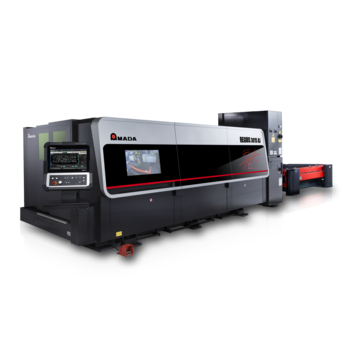
Companies engaged in sheet metal processing are subject to constant pressure. Batch sizes are decreasing, variability is increasing, times are getting shorter and quality requirements are very high.
The immediate response of the manufacturers was the continuous and progressive increase in the performance of the machinery. Although their effectiveness is fundamental to navigate increasingly competitive markets, we must take a holistic approach and think in terms of optimising the entire production cycle.
The relationship between laser cutting and automation is part of this scenario.
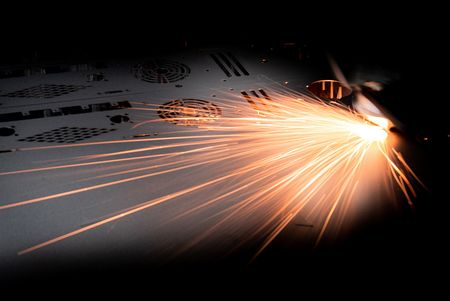
Laser cutting and process automation
The most advanced machines guarantee maximum productivity, which translates into extraordinary precision and cutting speed. However, if the machine has to stop to allow the manual unloading procedures and if the time required for sorting is not compatible with the needs of the market, the performance of the machine goes into the background and the whole company is affected. Let’s not forget, in fact, the sorting of the parts cut according to the following phases is not a simple task, and that any manual operation (including sorting) produces errors and inefficiencies, as well as not being able to guarantee a homogeneous quality between the various processes
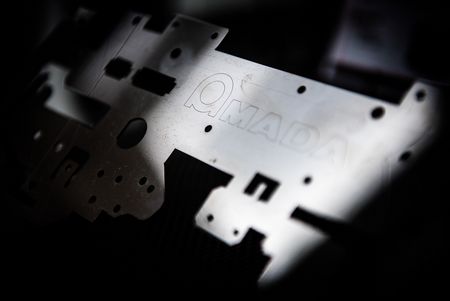
In a completely mirror-like way, automating loading/unloading and sorting operations offers significant benefits, including:
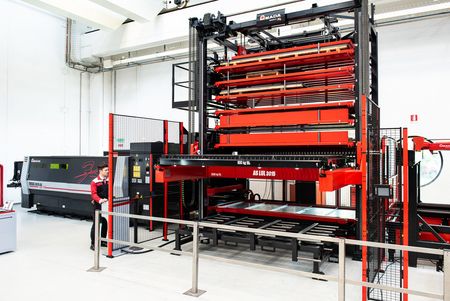
For the above reasons, the loading/unloading of the sheet, obtained with special automatic warehouses synchronized with the cutting machines, is decisive for the whole process because it enables the concept of production without interruptions, this means no downtime resulting from waiting for the sheet to be loaded or the product to be unloaded. To be effective, however, the relationship between laser cutting and automation must be perfectly declined in the production reality in which it will operate: type and location of the other machines, defining the workflow and location of raw materials are some of the aspects to be taken into account
Last but not least, we should not forget that automation also has a very beneficial impact on the safety of production environments.
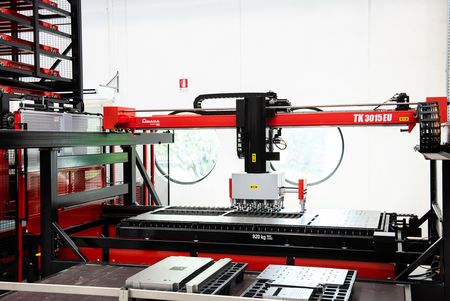
The types of automation and the (central) theme of sorting
In the context of sheet metal processing, the term automation has several meanings. The first, which has been discussed so far, is to entrust to the machines the most repetitive, delicate and/or dangerous phases of the process so as to increase productivity, make costs predictable, homogeneous quality and allow operators to focus on activities with greater added value.
In this context, and limiting the observation to cutting machines, we find solutions for automatic loading and manual unloading, automatic loading and unloading of the complete sheet, as well as advanced solutions that also take care of the sorting of the cut parts and their stacking, all through the adoption of pneumatic magnets or suction cups.
Sorting is an essential moment, with a strong impact on business productivity. In this context, the flexibility of the machines is very important, namely their ability to automatically manage various types of parts and support a market that requires smaller and smaller batches. As for the dynamics of subdivision of the parts, the machine follows the logic defined by software by the technical study. The quality of the work carried out depends on a number of factors, and it is not by chance that significant quality differences emerge in this respect between the various products on the market.

Functionality and automation in laser cutting machines
In the laser cutting ecosystem, the term automation also has a second meaning. Or rather, it intervenes at another level: that of the functionalities of the single machines. In this case, automation is not intended to replace operators, but to simplify certain complex tasks and procedures, in which errors are more frequent. In this way, automation allows less qualified personnel to achieve good results, while more experienced operators can deal with supervision or more value-added activities in the context of production and planning.
Several concrete examples can be given in this respect. So let’s consider REGIUS-AJ, the AMADA machine that ushers in a new era of laser processing. The REGIUS fiber laser integrates a series of combined technologies that affect both the speed and quality of processing: linear 3-axis motors, for example, greatly reduce non-productive time, while the proprietary AMADA technology for variable beam control allows you to automatically change the mode of the laser beam to adapt it to the thickness and type of material to be cut.
With regard to automation, REGIUS incorporates a new laser integration system (LIS) that allows the machine to operate at its best with minimal operator input. This includes i-Nozzle Checker, which automatically controls the status and centering of the nozzles and significantly reduces setup times. The i-Optics sensor, on the other hand, constantly monitors the protective slide allowing it to offer ideal performance, i-Process Monitor verifies the beam quality in real time to ensure the best cutting performance regardless of materials and thicknesses.